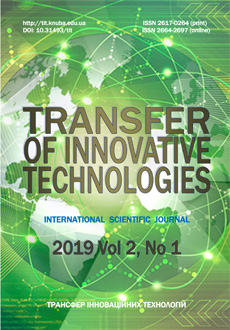Territory planning and tourism development in the coastal zone of Ukraine
DOI:
https://doi.org/10.31493/tit1921.0101Keywords:
Territory planning, coastal zone, tourism developmen, description of the AzovBlack Sea regionAbstract
The Black Sea Region of Ukraine with the length of 2,8 thousand km can be identified as one of the most long-range regions in regard to the sustainable tourism development. The potential opportunities of the possible tourism development and improvement can be caused by the following main factors: incomplete level of the development of tourism resources; attractiveness for the population of such regions as East Europe, North and Central Asia that have transport connection and traditionally use the Black Sea coast for summer rest without language barrier; enlargement of the tourism field for the tourists from the countries of Central and West Europe; developing of the quality of the tourism service as a result of the realization of the privatization of the tourist complexes; improvement of the environmental safely level that is already observed and can be continued as a result of the implementation of the environmental measures; development of the transport system, improvement of the access and visa regime; difference between the costs for tourist services. The Law of Ukraine "On Tourism", established the legislative preconditions for tourism transformation. Also provided the essential change of the governmental scheme in the field of tourism with the aim so approach its formation to the one of the one of the priorities in the branch of economics. At the same time the real problems and constraints exist which restrain the sustainable tourism development in the Ukrainian, part of the coastal zone. There is a necessity for the development of some parts of the tourism services which are the obligatory components of the market economy system and which formerly were not developed or were solved without taking into account economic measures.They are: the establishment of the marketing system for the provisions of the tourism activities, including the establishment of the sale system, advertisement, arrangement of the services structure in accordance to the requirements, certification of the tourist complexes in regard to the world service level; development of the tourist infrastructure, provision of the necessary, information about the quality of environment and value of recreated resources. There is a need to conduct the environmental sanitation of the tourist complexes on the base of their privatization.
References
Panchenko T.F., 2009. Tourist Environment: architecture, nature, infrastructure. Kyiv, Logos, 176 (Ukrainian).
Territory Planning Scheme, 2006. Coastal Zone of the Black and Azov Seas for Application in Donetska, Zaporizka, Khersonska, Odeska, Mykolaivska Oblasts and the AR Crimea Kyiv, DiproMisto, 230 (Ukrainian). 3. Resolution, 1997. On amending the list of settlements attributed to resorts, No.1391. Kyiv, Cabinet of Ministers of Ukraine, 6 (Ukrainian).
Karamushka V.I., 2008. Territorial planning of development of the coastal zone in Ukraine: analytical review. Kyiv, Education Management University, 53 (Ukrainian).
Town-planning Reference book for the designer, 2006. Second ed. (ed. Dr. Architecture T.F.Panchenko). Kyiv, UkrArhBudInform, 192 (Ukrainian).
Town-planning, 2002. Planning and development of urban and rural settlements. DBN 3609**. Kyiv, UkrArhBudInform, 107 (Ukrainian).
Law of Ukraine, On resorts, 2004. Collection of legislative acts of Ukraine on protection of natural environment. Chernivtsi, Zelena Bukovyna, Vol.10, 283-290 (Ukrainian).
Law of Ukraine, On the nature reserve fund of Ukraine, 2004. Collection of legislative acts of Ukraine on protection of natural environment. Chernivsi, Zelena Bukovyna, Vol.10, 26-39 (Ukrainian).
Panchenko T.F, Onischenko V., 2009. Townplanning principles of complex development coastal cities (in the conditions of the AzovBlack Sea region). Report on research work. Kyiv, Town Planning institute, 165 (Ukrainian). 10. Development of the town-planning code, 2009. Report on research work (adv. Yu.Bilokon, respons. performer A. Ekonomov). Kyiv, DniproMisto, 107 (Ukrainian).
Composition, contents, procedure of development, coordination and adoption of territory planning schemes (DBN B.1.1-6:2007), 2007. Kyiv, UkrArhBudInform, 9 (Ukrainian).
Fomin I.A., 1986. City in the system of inhabited localities. Kyiv, Budivelnik, 112 (in Russian). 13. Dyomin N.M., 1991. Management by development of town-planning systems. Kyiv, Budivelnik, 185 (in Russian). 14. Bilokon Y.M., 2003. Regional planning (theory and practice). Kyiv, Logos, 246 (in Ukraine).
Ludmila Ruban, 2016. Underwater urban studies: modern issues and trends. Underwater Technologies, Vol.03, 54-65 (in Ukrainan).
Iryna Ustinova, 2015. Theoretical principles of ware urbanistics. Underwater Technologies, Vol.01, 33-42 (in English).
Timokhin V., 2008. Architecture of City Development. 7 books on the theory of cityplanning. Kyiv, KNUBA, 628 (Ukrainian).
Kuznetsov O.L., Bolshakov B.E., 2002. Sustainable development: Scientific Fundamentals of Designing a System Nature-Society-Man. St. Petersburg-Moscow-Dubna, Humanystyka, 616 (in Russian).
Downloads
Published
How to Cite
Issue
Section
License
Copyright (c) 2020 Transfer of Innovative Technologies

This work is licensed under a Creative Commons Attribution-NonCommercial-NoDerivatives 4.0 International License.
Our journal abides by the CREATIVE COMMONS copyright rights and permissions for open access journals.
Authors, who are published in this journal, agree to the following conditions:
1. The authors reserve the right to authorship of the work and pass the first publication right of this work to the journal under the terms of a Creative Commons Attribution License, which allows others to freely distribute the published research with the obligatory reference to the authors of the original work and the first publication of the work in this journal.
2. The authors have the right to conclude separate supplement agreements that relate to non-exclusive work distribution in the form in which it has been published by the journal (for example, to upload the work to the online storage of the journal or publish it as part of a monograph), provided that the reference to the first publication of the work in this journal is included.




